Rare Sea Glass
Rare Sea Glass and Rare Beach Glass
-
Why is it hard to find?
-
How can I find it?
On this page:
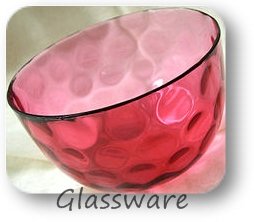
What makes certain colors of sea glass rare depends basically on:
- First, and the most important, the relative amount of glass produced in certain colors by the glass industry, ie, more green glass produced by the industry, more green shards, less rare.
- Second, to a minor extent, if the production of that glass took place near a shore (dumped directly from the factory or shop).
To look at these factors in more detail, let's first break the glass (well, not literally) down into two categories.
Rare Sea Glass

Two Categories of Glass and their Relation to Rare Sea Glass
To simplify matters, we will divide glass into two categories, both of which produce rare sea glass under the right conditions:- Production glass - Mass produced in large quantities, most likely glass formed in molds rather than blown.
- Designer glass - One-of-a-kind glass that was made as art work or for a number of other special purposes.
Let's look at these two categories in more detail now.
A. PRODUCTION GLASS
Briefly, what we will call production glass is glass that was produced in large quantities and was used for everyday products. Generally, production glass was produced for three uses:1. The first and by far
the largest production of glass has been for clear glass
for bottles or windows; also, the common colors of glass for bottles (brown
and green,
for example).
2. The next type of
production glassware, in terms of quantity, would probably
be
that of dinnerware.
- Although mass produced, the quantity of glass made for dinnerware does not come close to the glass used for bottles and windows.
- The colors of dinnerware glass are much more varied and this is really where we begin to see more of the rarer sea glass colors
3. The third type of
production glass has been made for decor such as
mass-produced lamps, vases, knick-knacks, etc.
We could also include in
this third group utilitarian glass, ie,
warning lights, insulators, sparkplugs, etc.
- Colors used in these production items were generally one
clear color throughout. However, combined colors and blended colors
were used also. (See Colors
- How is Sea Glass Made).
- Some of the colored production glass (examples would be
Depression Ware and Carnival glass) although produced in a large
quantity, may have been only produced for a relatively-short period of
time, and therefore much less common. Shards from this type of glass
make rare sea glass.
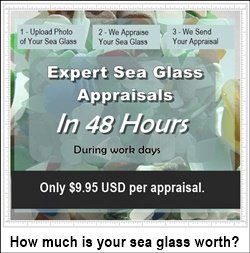
Designer Glass
What we will call designer glass was made specifically for artistic
objects and is especially sought after as rare sea glass.This would include much of the blown glass, most stained glass, and other more expensive and artistic one-of-a-kind uses. Many times, this glass will be fused, laminated, and mixed.
Designer glass is generally not just one color throughout but a blend or combination of colors and..." hspace="15" vspace="10">
- Designer glass is generally not just one color throughout
but a blend or combination of colors and may have iridescent, opalescent, or
other special qualities.
- Rare designer glass of this type is almost impossible to
find on your average beach, but rather is found in decent quantities
only near a glassmaker's shop or art glass production centers.
- On the other hand, isolated pieces are to be found in old
community or
homestead dumps; in other words, just about anywhere; and this does
make your search of any beach exciting!
What are the chances of you finding a rare piece of glass?
Pretty good, actually...if you spend time at it.
To see one of our contributor's (Toshi) excellent comments regarding perseverance, click hereIt's like fishing.If you go out fishing off the pier at the local beach, you may catch a lot of the common smaller fish.
BUT, there is always the chance of catching "the big one."
The same is true of sea glass. However, like a fisherman who plans a fishing trip, you also can narrow the beaches down to the more likely good "sea glass fishing" beaches.
How? Do some research. There may be an unknown (to sea glass fans) special beach near where you are or will be going.
To know what to look for, go next to Identifying a Good Sea Glass Beach.
If you do find a piece of rare sea glass, please share it!
A Note on Size and Shape:
It should be noted that
rarity will also be affected by size and shape.For example, a green glass marble is a lot rarer than green bottle glass. And a red piece that is little larger than a grain of salt is not nearly as rare as the same color the size of a quarter.
Shapes and their origins are discussed on other pages on this site.
Now we hit where the opinions vary. It seems that a lot of times the color and rarity depend upon what geographic areas you're talking about.
For instance, the colors of sea glass found on the beaches in Indonesia will be different from, say, the sea glass found on the beaches in Puerto Rico or Japan. Take cornflower blue, it could be really hard to find in one area but easily found in another.
Now, getting back to that peach/salmon color you're dreaming of, yes, it would be quite rare (look at the rarity chart to see where it fits in); however, being able to say what it's worth would depend on the buyer, as with all collectibles, as well as the size, shape, and a well-worn and well-frosted look.
Go to our chart of rarity of sea glass colors (based upon my own collection which is a lot of sea glass collected over the years). Click here to see the color and rarity chart. Keep in mind what I said about the color rarity being different depending on the geographical area.
I would say that if you can't quite classify the color, you've got a fairly uncommon color.
Again, regardless of the sea glass color and rarity, it's always a thrill to find a piece on the beach all by yourself! Who knows, maybe your next time out, you'll find a piece of rare beach glass/seaglass. Wouldn't that be cool?
See Also:
 How to Grade Sea Glass |
 Identifying a Good Sea Glass Beach |
 Find Beaches in Your Area |
 Questions About Beach Glass? |
 Photos of Sea Glass |
Sea Glass Crafts Ideas |
 Sea Glass Rarity Chart |
 Real or Fake Sea Glass? |
Go from this Sea Glass Color page to Odyssey Sea Glass Home
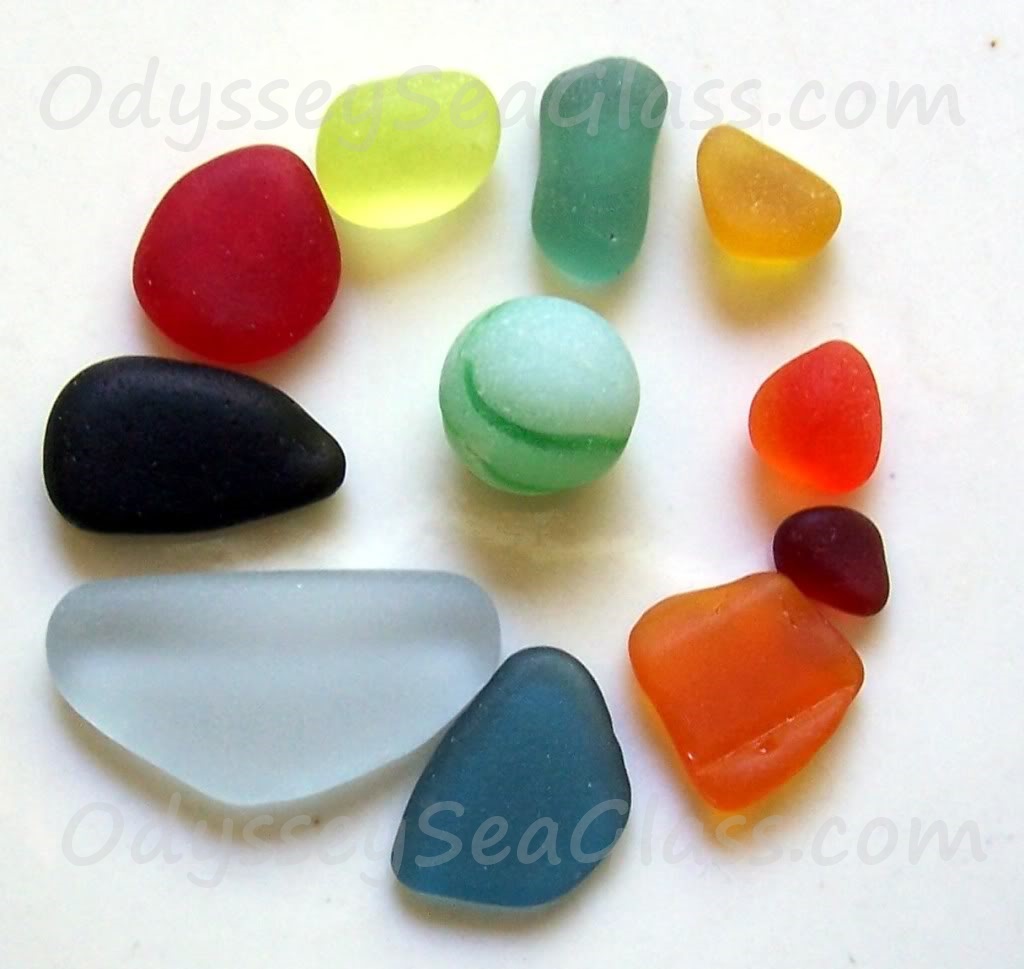
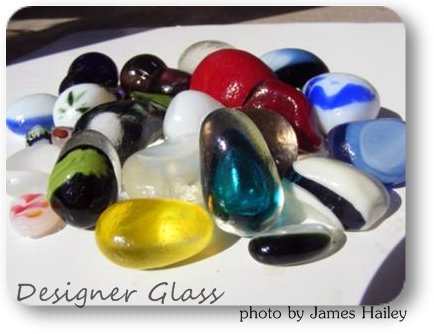
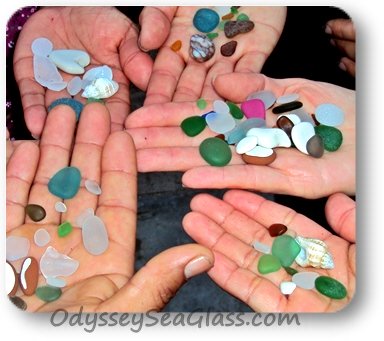
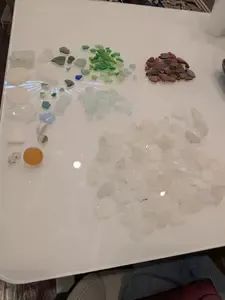
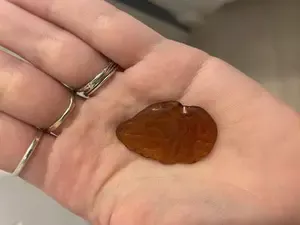

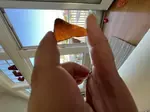
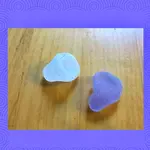
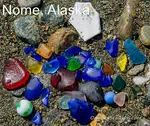

Comments!
We love receiving your comments, but please read the notes below before posting. Thank you!NOTES:
All comments are moderated. If you leave the page you won't see your comment until it is approved.
Select the "Post to Facebook" check box to be notified on FB when a reply has been posted.
If you scan the previous comments you may find an answer to your question. Click the "View X more" link at the bottom (if visible) to see all comments.
Photos - If you would like to include a photo, please use our Photo Forums.
Questions - If you have a question, it may already be answered. Please tap or click here to search of our site first.